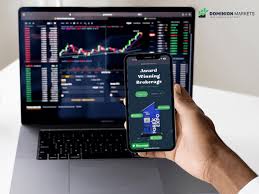Revolutionizing Forex Trading with AI A Comprehensive Guide 1589809297
Casinos Online Em Portugal Os Melhores Em Casinos Pt
31/10/2025Die Besten On The Web Casinos Im Test Out Deutsche Top Casinos In 2025
31/10/2025
Revolutionizing Forex Trading with AI: A Comprehensive Guide
In recent years, the world of finance has witnessed a seismic shift due to the introduction of artificial intelligence (AI) technologies. The foreign exchange (Forex) market, known for its high volatility and complexity, has been particularly receptive to these advancements. Traders are now leveraging AI to refine their strategies, improve accuracy, and manage risks more effectively. In this article, we explore the benefits of AI in Forex trading, methodologies, and insights on how to get the most out of this technology. For those seeking a compliant trading environment, check out ai forex trading Top Sharia Forex Platforms.
Understanding AI in Forex Trading
AI in Forex trading encompasses a variety of technologies, including machine learning, natural language processing, and neural networks. These systems analyze vast datasets at speeds unattainable by humans, identifying patterns and trends that can inform trading decisions. The result is a more data-driven approach to trading that enhances strategy development, execution, and risk management.
Benefits of AI in Forex Trading
- Enhanced Decision Making: AI algorithms can sift through massive amounts of historical data to identify profitable trades that human traders might overlook.
- Elimination of Emotional Trading: By relying on data, AI reduces the influence of emotions—such as fear and greed—on trading decisions, which can lead to more consistent profits.
- Automation and Efficiency: AI systems can execute trades automatically, allowing traders to take advantage of market opportunities around the clock without manual intervention.
- Risk Management: AI tools are capable of assessing market conditions in real-time, allowing for dynamic adjustments in risk management strategies and stop-loss placements.
- Backtesting and Strategy Optimization: Traders can use AI to simulate past market scenarios, refining their strategies based on historical performance before applying them in real-time trading.
How AI Algorithms Operate in Forex Trading

The algorithms used in AI Forex trading are generally categorized into two primary types: supervised learning and unsupervised learning. Supervised learning involves training algorithms on labeled datasets, where the desired output is known. This allows the algorithm to learn from past patterns to predict future price movements.
On the other hand, unsupervised learning is where algorithms analyze unlabeled data to identify patterns and correlations. These techniques can uncover hidden trends in the market that might not be apparent through traditional analysis. A hybrid approach often combines both methodologies to maximize predictive accuracy and performance.
Common AI Tools Used in Forex Trading
Several AI tools and platforms have emerged to support Forex traders. Some of the most common include:
- Trading Bots: Automated trading systems that utilize AI algorithms to execute trades based on predefined conditions and real-time market analysis.
- Signal Generators: AI-driven platforms that provide trading signals based on complex analyses of market trends, helping traders identify entry and exit points.
- Sentiment Analysis Tools: Tools that analyze news and social media to gauge market sentiment, allowing traders to measure public sentiment regarding currency pairs.
- Portfolio Management Systems: AI solutions that optimize asset allocation and diversification by analyzing market data and historical performance metrics.
Challenges and Limitations of AI in Forex Trading
While AI presents many advantages, it’s essential to understand its limitations. The Forex market is influenced by numerous unpredictable factors, such as geopolitical events and economic changes. AI models are only as good as the data and algorithms they operate on, and markets can behave irrationally.

Moreover, the reliance on AI can create a false sense of security. Traders must remain vigilant, continuously monitoring their systems and maintaining an understanding of underlying market conditions. Additionally, market conditions can change rapidly, requiring models to adapt swiftly, which can be a significant challenge for AI algorithms.
The Future of AI in Forex Trading
The integration of AI in Forex trading is still in its early stages, but its potential is undeniable. As technology continues to advance, we can expect even more sophisticated algorithms and tools that enhance trading accuracy and efficiency. Innovations such as quantum computing may also revolutionize the capabilities of AI in the finance sector.
Furthermore, as regulatory frameworks evolve, AI-powered trading platforms will likely adapt to ensure compliance with new rules and standards. The future is bright for AI in Forex trading, offering opportunities for both novice and experienced traders to navigate the complexities of the market with confidence.
Conclusion
AI is transforming Forex trading by providing tools that enhance decision-making, automate processes, and manage risks. As traders embrace these technologies, those who understand how to leverage the power of AI will gain a significant competitive advantage. With ongoing advancements in machine learning and data analysis, the possibilities for AI in Forex trading are limitless. Investors looking to capitalize on this transformation should stay informed, embrace new technologies, and consider the best platforms available to optimize their trading strategies.
In conclusion, whether you’re a beginner or an experienced trader, integrating AI into your Forex trading strategy could be a game-changer. With the right tools and knowledge, you can harness the power of AI to maximize your trading investments.
